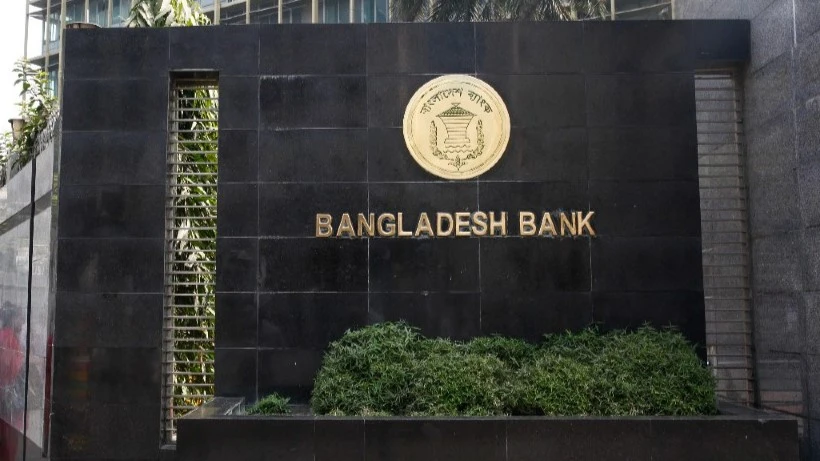GET IN TOUCH
- Please wait...

Bangladesh is one of the fastest growing economies in Asia-Pacific. The country is aspiring to gain the status of a middle income country very soon and has been making great strides in terms of social, economic, and technological transformation. It recorded a commendable GDP growth rate of 7.86% in 2018.[1] Having said all that, a growing economy like Bangladesh is expected to have high private sector credit growth, high investments, a vibrant stock market, and a dynamic financial system. However, the Bangladesh banking sector has been on a downward trend since the first quarter of 2018.
The financial sector of Bangladesh is undergoing a liquidity crunch owing to a number of demand and supply side factors. Alongside, governance issues within the banking system have contributed to high levels of non-performing loans (NPLs), resulting in a lack of trust in the banking industry.
The financial system of Bangladesh is comprised of three broad fragments: formal sector, semi-formal sector, and informal sector. The formal sector includes all regulated financial institutions. The semi-formal sector includes institutions that are regulated otherwise but do not fall under the jurisdiction of the Central Bank. The informal sector includes private intermediaries which are completely unregulated.
The following diagram delineates the broad structure of the Bangladesh banking sector:
The basic principle of how commercial banks make money is by providing loans and earning interest income from those loans. The loans that they are providing come from the deposits they are taking from people in return for interest and from their own reserves. Their share is the difference between the lending and deposit interest rate.
The current weighted average deposit rate and lending rate of the country are 5.56% and 9.59% respectively.[3] Commercial banks also earn revenue from commission-based incomes from trade and treasury services.
The three main reasons for the current predicament of the Bangladesh banking sector are deposit shortage, declining asset quality due to governance issues, and enormous competition within the industry.
One of the most alarming symptoms of these causes is the rising level of non-performing loans. The amount of NPL stood at BDT 893.4 billion in 2018, which is more than 10% of the total loan disbursed.
Along with these, some other factors also played a role in the liquidity crunch. The next section takes a deeper look into it.
In the interbank market, the nominal exchange rate for the taka-US dollar depreciated by 3.9%, and the Real Effective Exchange Rate (REER) declined by 2.7%. The government injected USD 2.3 billion into the economy to adjust the exchange rate and to help banks make import payments. This has contributed to the outflow of funding from the banking system.[13]
For various reasons, the capital market hasn’t grown enough to counteract the liquidity crunch coming from the banking sector. Moreover, alternative forms of financing like private equity firms, venture capitalists, angel investors, crowdfunding, etc. haven’t grown as much as they should have. This has caused the financial system of the country to be heavily reliant on the banking industry.
From a remedial point of view, the first step would be to recognize each of these problems from both state and private levels. The next step would be to bring a few changes in the overall functioning of the banking industry.
Some other steps that might enhance the overall functioning of the banking system are:
The article is authored by Marzina Akhter Prottasha, Trainee Consultant at LightCastle Partners.
1. GDP per capita growth (annual %)- Bangladesh, World Bank Data, Accessed on 29.09.2019, Retrieved from https://data.worldbank.org/indicator/NY.GDP.PCAP.KD.ZG?locations=BD
2. Financial system overview, Bangladesh Bank, Accessed on 29.09.2019, Retrieved from https://www.bb.org.bd/fnansys/index.php
3. Interest Rate Spread, Bangladesh Bank, Accessed on 29.09.2019, Retrieved from https://www.bb.org.bd/econdata/w_avg_interest.php
4. Interest Rate Spread, Bangladesh Bank, Accessed on 29.09.2019, Retrieved from https://www.bb.org.bd/econdata/w_avg_interest.php
5. A Survey on Investment in National Savings Certificates (NSCs) of Bangladesh (2019), Bangladesh Bank, Accessed on 29.09.2019, Retrieved from https://www.bb.org.bd/pub/research/sp_research_work/srw1901.pdf
6. “Increased tax on savings tools: Limited income people to receive fatal blow” (2019), Dhaka Tribune, Accessed on 29.09.2019, Retrieved from https://www.dhakatribune.com/business/regulations/2019/06/16/increased-tax-on-savings-tools-limited-income-people-to-receive-fatal-blow
7. National Saving Directorate, Accessed on 29.09.2019
8. “Banking Sector in Bangladesh: Moving from Diagnosis to Action” (2018), Centre for Policy Dialogue (CPD), Accessed on 29.09.2019, Retrieved from https://cpd.org.bd/wp-content/uploads/2018/12/Banking-Sector-in-Bangladesh-Moving-from-Diagnosis-to-Action.pdf
9. “Chine blacklists five Bangladeshi banks” (2019), The Asian Age, Accessed on 29.09.2019, Retrieved from https://dailyasianage.com/news/193849/china-blacklists-five-bangladeshi-banks
10. “Banking Sector in Bangladesh: Moving from Diagnosis to Action” (2018), Centre for Policy Dialogue (CPD), Accessed on 29.09.2019, Retrieved from https://cpd.org.bd/wp-content/uploads/2018/12/Banking-Sector-in-Bangladesh-Moving-from-Diagnosis-to-Action.pdf
11. Bangladesh Quicksights Report (2018), Financial Inclusion Insights (FII), Accessed on 29.09.2019
12. Bangladesh Quicksights Report (2018), Financial Inclusion Insights (FII), Accessed on 29.09.2019
13. “Bangladesh Economic Outlook 2019: A resilient economy in need of sound policy”, LightCastle Analytics Wings, Accessed on 29.09.2019, Retrieved from https://lightcastlepartners.com/insights/2019/03/20/bangladesh-economic-outlook-2019-a-resilient-economy-in-need-of-sound-policy
14. Foreign Exchange Rate, Bangladesh Bank Data, Accessed on 29.09.2019
15. Bangladesh Bank data, Accessed on 29.09.2019
16. “Banking Sector in Bangladesh: Moving from Diagnosis to Action” (2018), Centre for Policy Dialogue (CPD), Accessed on 29.09.2019, Retrieved from https://cpd.org.bd/wp-content/uploads/2018/12/Banking-Sector-in-Bangladesh-Moving-from-Diagnosis-to-Action.pdf
17. Public Sector Banks in India- Complete List, Day Today GK, Accessed on 29.09.2019, Retrieved from https://www.daytodaygk.com/public-sector-banks-in-india-complete-list/
18. “Four new banks to get licence” (2018), The Daily Star, Accessed on 29.09.2019, Retrieved from https://www.thedailystar.net/backpage/news/four-new-banks-get-licence-1653208
Our experts can help you solve your unique challenges
Stay up-to-date with our Thought Leadership and Insights